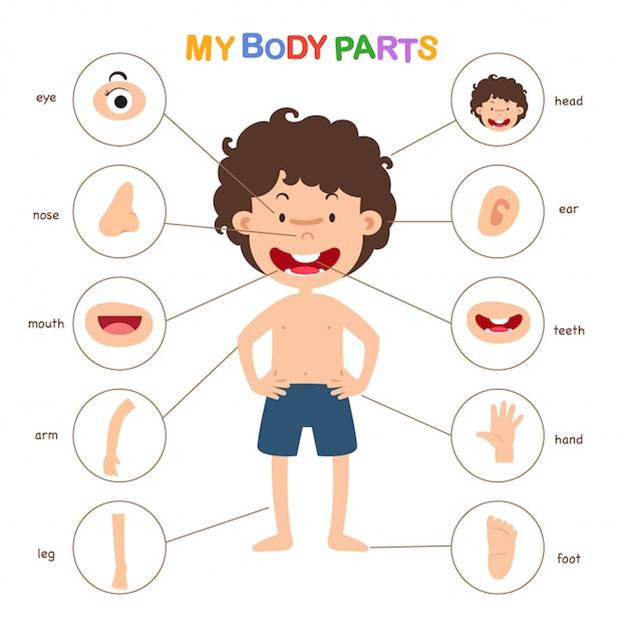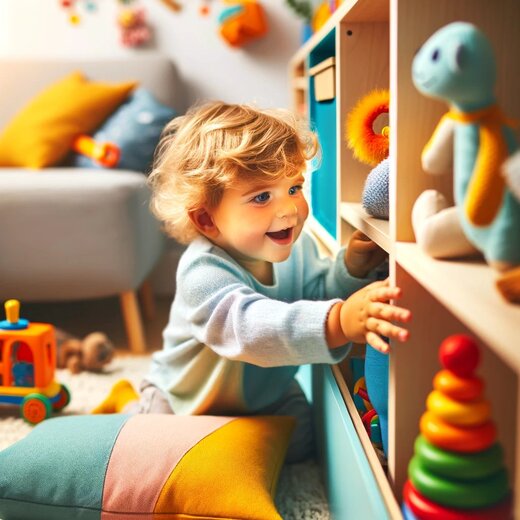Home Based Speech Therapy Activities for 1-2 Years Kids
By Rajini D
Last Updated: February 21, 2024
Witnessing your toddler’s first words brings unparalleled joy to parenting. These milestones, from “mama” and “dada” to their initial phrases, play a crucial role in their development. As a parent, you might wonder how to effectively support your child’s speech and language growth. Fortunately, engaging in home-based speech therapy activities offers a promising solution. For toddlers aged 1-2, the home environment is ideal for nurturing communication skills. It provides a comforting backdrop where learning can thrive. This article will serve as your roadmap, offering a collection of home-based speech therapy activities. You can easily integrate these into your daily life, enhancing your child’s ability to communicate and deepening your bond.
Want to make the most of your toddler’s early speech development? Pair these at-home activities with expert guidance through online speech therapy for 1–2-year-olds
Home Based Speech Therapy Activities for 1-2 Years
1. Naming Body Parts

Naming a body part activity supports not only language development but also helps children become more aware of their own bodies. It’s interactive and can be made fun through songs like “Head, Shoulders, Knees, and Toes,” encouraging them to touch and name their body parts as they sing along.
2. Knowing the Items

At this age, children are curious about their environment. Encouraging them to name everyday objects around the house helps build their vocabulary. This activity can be as simple as pointing to objects in the room and naming them or finding objects that start with a certain letter.
3. Color Recognition

Teaching colors is a great way to introduce new words and concepts to young children. This can be done through a variety of activities, such as sorting toys by color or identifying the color of foods during mealtime. It’s both educational and visually stimulating for them.
4. Knowing the Animals

Associating animals with their sounds is not only fun but also an effective way to enhance a child’s auditory discrimination and vocabulary. Reading books with animal characters, playing with animal toys, and making the corresponding sounds enrich their learning experience.
5. Understanding Simple Commands

Following simple commands improves both language comprehension and early social development. Start with simple one-step commands like “Come here,” “Sit down,” or “Give me the ball.” As they become more proficient, you can move on to two-step commands. This activity fosters listening skills and the ability to follow directions.
Here are the other profound home-based speech therapy activities for 1-2 years kid
| Activity | Short Description |
|---|---|
| Fun with Numbers | Introduce basic counting and numbers through playful activities like counting toys, steps, or clapping hands. |
| Food Item Recognition | Help children identify and name different food items, enhancing vocabulary and awareness of food. |
| Learning the Action Words | Engage in activities that demonstrate action verbs (e.g., jump, eat, run), encouraging children to act them out and learn the words. |
| Learning Vehicles Names | Teach names of common vehicles (car, bike, bus) through toy vehicles, books, or videos, fostering word recognition. |
| Learning the Alphabets | Introduce letters of the alphabet using books, puzzles, or magnetic letters, focusing on recognition and sounds. |
| Learning the Professions | Use dolls, figurines, or books to introduce different professions (doctor, firefighter), expanding vocabulary and understanding of community roles. |
| Recognizing Clothes | Help children identify and name different types of clothing items, enhancing vocabulary related to dressing. |
| Name Recognition | Teach children to recognize and respond to their own names and the names of family members. |
| Naming a Toy | Encourage children to name their toys, fostering language development through play. |
| Naming the Emotion | Use facial expressions, pictures, or scenarios to help children identify and name different emotions. |
| Naming the Vegetables | Introduce various vegetables by name, possibly during meal preparation or grocery shopping, to build vocabulary. |
| Recognition Shapes | Teach basic shapes (circle, square, triangle) using blocks, drawings, or puzzles, enhancing cognitive and language skills. |
| Recognition the Fruits | Introduce fruits by name, encouraging recognition through tasting sessions, pictures, or play food items. |
| Understanding the Question | Practice asking simple questions and encourage children to respond, aiding in comprehension and conversational skills. |
| Listening and Doing | Combine listening to simple instructions with physical actions (e.g., “Pick up the ball”) to improve auditory processing and follow-through. |
Understanding Speech Development in Toddlers (1-2 Years)
As parents, witnessing your toddler’s speech development is both exciting and pivotal. Between the ages of 1 and 2, your child will hit significant milestones in their ability to communicate. Understanding these milestones and recognizing the signs of a speech delay can equip you with the tools needed to support your child’s growth effectively.
Visit our comprehensive overview on speech and language milestones for 1 to 2 years
Milestones in Speech and Language Development
What to Expect at 1-2 Years of Age
At this stage, your toddler is becoming more expressive and begins to use words to communicate their needs, interests, and curiosity about the world around them. Here’s what you can typically expect:
- First Words: By their first birthday, most toddlers start to say a few simple words like “mama” or “dada.” They gradually increase their vocabulary to include names of familiar people, common objects, and some body parts.
- Understanding: They will understand and follow simple one-step instructions such as “Come here” or “Sit down” and recognize the names of common objects and people.
- Imitation: Toddlers love to imitate the actions and sounds they see and hear. This can include mimicking words and phrases, though not always perfectly.
- Gestures: The use of gestures accompanies speech development. Pointing, waving goodbye, and nodding for “yes” or shaking the head for “no” were common gestures during this period.
- Two-Word Phrases: Closer to 2 years of age, many toddlers start to combine two words to make simple sentences like “More milk” or “Mommy go.”
Signs of a Speech Delay
While every child develops at their own pace, there are certain signs that may indicate a speech delay:
- Limited Vocabulary: By 18 months, if your child uses fewer than 20 words, it might be a sign of a delay.
- Lack of Gestures: Not using gestures such as pointing or waving by 18 months.
- Difficulty Imitating Sounds: Difficulty or reluctance in imitating speech sounds can be a sign to watch for.
- Preference for Gestures Over Words: Relying more on gestures to communicate rather than trying to vocalize, even simple sounds or words, beyond the age of 2.
- Lack of Interest in Social Interaction: Limited interest in interacting with others or engaging in social activities like simple games can also be indicative of a delay.
When to Seek Professional Advice
It’s important to remember that there’s a wide range of normal when it comes to speech development. However, if you notice any of the signs of a speech delay or if you’re concerned about your child’s communication skills, it’s advisable to seek professional advice. A pediatrician or a speech-language therapist can provide you with guidance and, if necessary, recommend a tailored home-based speech therapy activities plan. Early intervention is key in supporting your child’s speech and language development effectively.
Incorporating simple, fun activities into your daily routine can significantly support your toddler’s speech and language skills. Reading together, singing songs, and engaging in back-and-forth conversations using simple words and sentences can create a rich language environment that encourages your child’s speech development.
Remember, every child’s journey is unique. Celebrate the milestones, support the challenges, and enjoy the process of learning and growing with your child.
Setting the Foundation for Successful Home-Based Speech Therapy Activities
When it comes to nurturing your child’s speech development, the comfort of your home offers a rich environment for effective learning and growth. Home-based speech therapy activities tailored for 1-2-year-olds can significantly benefit from a structured approach, blending routine, repetition, and a conducive setting. Here’s how you can lay a strong foundation for your child’s speech and language skills right from your living room.
Creating a Conducive Environment
A speech-friendly home environment is pivotal for encouraging your little one’s verbal skills. Here are some practical tips to create an atmosphere that enhances your child’s ability to learn and use language:
- Minimize Distractions: Keep the learning space free from excessive noise and visual distractions. This focus helps your child concentrate on the sounds and nuances of speech.
- Get Down to Their Level: Physically lowering yourself to your child’s eye level can make communication more direct and engaging. It demonstrates that you are fully present and attentive to their attempts at speech.
- Use Visual Aids: Pictures and objects that are relevant to your child’s life can help them make connections between words and their meanings. Simple picture books, toys, and household items can be effective tools.
- Ensure Adequate Lighting: Good lighting is essential, not just for visual comfort but also because it allows your child to see your facial expressions and mouth movements clearly. This visual feedback is crucial for speech development.
The Importance of Routine and Repetition
Consistency is key in teaching new skills, especially when it comes to speech development in young children. Here’s how routine and repetition play a vital role:
- Build a Daily Routine: Incorporate speech therapy activities into your daily schedule. Consistent practice, even if it’s just a few minutes a day, can make a significant difference in progress.
- Repeat Sounds and Words: Repetition helps reinforce language learning. Repeat sounds, words, and simple phrases frequently. Encourage your child to mimic you, celebrating their efforts and successes, no matter how small.
- Sing Songs Together: Music is a fantastic tool for speech development. Sing nursery rhymes and simple songs with repetitive phrases. The melody and rhythm make it easier for children to remember words and sounds.
- Use Everyday Activities: Incorporate speech practice into everyday activities. Whether you’re dressing up, eating, or playing, use these opportunities to introduce new words, describe actions, and ask questions.
Everyday Opportunities for Speech Development
The key to fostering speech development in young children lies in seizing the everyday moments. From the breakfast table to the playground, each setting is ripe with opportunities for language learning. The activities suggested here are designed to be simple, engaging, and easily incorporated into your daily life, ensuring a fun learning experience for both you and your child.
Explore more on Knowing the Household Items: Home Based Speech Therapy Activity for Toddlers.
Mealtime Conversations
Mealtime is more than just a time for eating; it’s a treasure trove of speech development opportunities. Engaging your child in conversation during meals can have a profound impact on their language skills. Here’s how to make the most of family meals:
- Narrate Your Actions: Describe what you’re doing as you prepare the meal. Use simple, descriptive language to talk about the colors, textures, and smells. “I’m peeling the orange. It’s round and orange. It smells sweet.”
- Encourage Imitation: Use mealtime to encourage your child to imitate sounds and words. You can do this by naming foods, utensils, and actions and then pausing to give your child a chance to mimic the words.
- Expand on Their Language: If your child uses a word or gesture, expand on it. For example, if they say “an apple,” you can respond with, “Yes, it’s a big, red apple. Would you like a slice?”
- Introduce New Vocabulary: Mealtime is an excellent opportunity to introduce new words. Include a variety of foods in your meals to naturally bring in new vocabulary.
Read more Engaging Food Recognition Activities for Young Children: A Guide for Parents.
Outdoor Adventures
The great outdoors is a natural playground that stimulates all the senses, making it an ideal environment for language development. Here’s how outdoor activities can enhance your child’s speech:
- Explore Nature Together: Take walks in the park, visit a zoo, or simply explore your backyard. Talk about what you see, hear, and feel. “Look at the butterfly. Its wings are blue and green.”
- Social Interaction: Playdates and interactions with other children and adults outdoors provide a rich language environment. Encourage your child to engage in simple conversations, even if it’s just through gestures or single words.
- Sing and Recite: Use the outdoor time for singing nursery rhymes or reciting simple poems together. The rhythmic patterns and repetitive phrases are excellent for speech development.
- Ask Open-Ended Questions: Encourage your child to think and express themselves by asking questions that require more than a yes or no answer. “What do you like about the park?” This encourages language use and thought formulation.
Incorporating Speech Therapy into Daily Routines
Integrating speech development activities into your daily routines can make learning seamless and stress-free. Here are some practical ways to do so:
- Reading Time: Dedicate time to read with your child every day. Interactive books with flaps or textures are especially engaging for toddlers. As you read, point to and name objects, ask questions, and encourage your child to point to pictures.
- Play Time: Use playtime to build language skills. Toys don’t have to be fancy; everyday objects can be used to teach new words and concepts and follow simple instructions. “Put the ball under the table.”
- Daily Chores: Involve your child in simple chores and use these moments to talk about what you’re doing. Sorting laundry by color, for example, can be a fun way to learn colors and practice counting.
- Music and Movement: Incorporate music and dance into your daily routine. Songs with actions, like “The Wheels on the Bus,” encourage verbal and non-verbal communication.
Tips for Parents on Home Based Speech Therapy Activities
As a parent, you play a crucial role in your child’s speech and language development. Engaging in home-based speech therapy activities can be a rewarding way to support your little one’s ability to communicate. Here are some practical tips and strategies to help you foster your child’s speech and language skills effectively.
Encouraging Speech and Language Development
| Do’s | Don’ts |
|---|---|
| Talk to your child frequently about your daily activities. | Avoid overcorrecting your child’s speech mistakes. |
| Read together, focusing on age-appropriate books with bright pictures. | Don’t rely solely on screens for your child’s learning and entertainment. |
| Sing songs, nursery rhymes, and simple melodies to improve listening skills and word recognition. | Don’t skip one-on-one time, as personal interaction is crucial for development. |
| Use simple, clear words and short sentences to enhance understanding. | – |
| Encourage your child to imitate sounds, words, and actions. |
Know more about Speech Therapy at Home: Top Tips For Parents
Tracking Progress and Celebrating Milestones
Keeping a record of your child’s speech and language achievements can be both motivating and rewarding. Here are some ways to track progress and celebrate milestones:
- Keep a Progress Journal: Note down new words, phrases, or sounds your child learns. Recording dates can help you track the pace of their development.
- Celebrate Small Wins: Did your child learn a new word or follow a simple instruction? Celebrate these moments with praise, claps, or a special treat. This positive reinforcement encourages them to keep trying.
- Share Milestones: Share your child’s progress with family members or close friends. This not only boosts your child’s confidence but also encourages a supportive environment for their development.
- Review and Reflect: Periodically review the progress journal with your child. This can be a delightful way to show them how much they’ve learned, making language learning a shared, joyful journey.
When to Seek Professional Help
As parents, witnessing your child’s developmental milestones is a joyous experience. However, it’s essential to remember that each child’s growth pace is unique, especially when it comes to speech and language development. While home-based speech therapy activities can significantly benefit your child, recognizing when to seek professional help is crucial. Here, we explore the signs indicating the need for professional intervention and guide you on navigating speech therapy services, ensuring your child receives the support they need to thrive.
Recognizing the Need for Professional Intervention
Early intervention can make a considerable difference in your child’s speech and language development. Being proactive and informed about the signs that may indicate the need for professional help is vital. Here are some signs that your child might benefit from seeing a speech therapist:
- Limited Vocabulary: By the age of 2, most children can say 50 or more words. If your child uses fewer words than peers, it might be time to consult a professional.
- Difficulty Combining Words: If by 2 years old, your child is not starting to combine words into simple sentences like “more milk,” this could indicate a delay in speech development.
- Understanding: Difficulty understanding simple instructions or questions can also be a sign.
- Pronunciation Problems: While not all sounds are mastered by 1-2 years old, significant difficulties in pronunciation or an inability to be understood by family members can be a concern.
- Social Interaction: Limited use of gestures (like waving or pointing) or lack of interest in social interaction may suggest it’s time to seek advice from a speech therapist.
If you notice these signs, it’s important not to panic. Each child is unique, and variations in development are common. However, consulting a professional can provide clarity and direction.
Navigating Speech Therapy Services
Finding the right support and services for your child might seem daunting, but with the right information and resources, the process can be simplified. Here’s how to navigate speech therapy services effectively:
- Research Local Services: Look for licensed speech-language pathologists (SLPs) in your area.
- Explore Early Intervention Programs: Many regions offer early intervention services for children under 3 years old. These programs are designed to provide support at no cost or on a sliding scale basis.
- Ask Questions: When meeting potential therapists, ask about their experience with children your child’s age and their approach to therapy. It’s important that you feel comfortable and confident in their expertise.
Here are a few questions that can streamline the process for parents seeking the right speech therapist for their child- What experience do you have working with toddlers aged 1-2 years, specifically in speech and language development?
- Can you describe your approach to speech therapy for children in this age group?
- How do you involve parents in the therapy process, and what kind of home activities do you recommend?
- What milestones and improvements should we expect to see, and over what timeframe?
- How do you measure progress, and how often will we review and adjust the therapy plan?
Building a Supportive Community with Wellness Hub
At Wellness Hub, we understand the importance of supporting your child’s development and well-being. We’re dedicated to providing parents with the resources, advice, and community support needed to navigate the journey of raising healthy, happy children. From home-based speech therapy activities to professional guidance, Wellness Hub is here to ensure you and your child have access to the best possible care. Join our community today to connect with experts and other parents who understand your journey, making the path to wellness a shared experience.
Conclusion
In the journey of nurturing a child’s ability to communicate, every word, gesture, and interaction holds immense value. As we’ve explored throughout this article, home-based speech therapy activities tailored for 1-2-year-olds can significantly enhance your child’s speech and language development. These activities, ranging from simple story-telling sessions to engaging in everyday conversations, are designed to be both fun and educational. They serve not only as a foundation for language development but also as a wonderful opportunity to strengthen the bond between you and your child.
It’s essential to remember that every child’s development path is unique. While some may pick up new words and phrases quickly, others may take a bit more time. The key is patience, persistence, and positive reinforcement. Celebrate the small victories along the way, whether it’s a new word, a clearer pronunciation, or even just a gesture that shows they’re trying to communicate. Each of these moments is a step forward in their speech and language journey.
FAQs
1. What are the best home speech therapy activities for my 1-2-year-old?
Simple and engaging activities like reading together, singing nursery rhymes, and talking about your day can significantly enhance your child’s language skills. Playing with toys that encourage naming and describing objects, such as animals or everyday items, can also be beneficial.
2. How can I encourage my child to start talking?
Encourage your child to talk by speaking directly to them about what you’re doing and what they see around them. Pause to give them a chance to respond, even with just sounds or gestures, and celebrate any attempt at communication to build their confidence.
3. What signs indicate my child might need speech therapy?
If your child is not using any words by 18 months, prefers gestures over vocalizations to communicate, or shows frustration when trying to express themselves, it might be time to consult a speech therapist for a professional evaluation.
4. How much time should I spend on speech therapy activities at home?
A few minutes of focused activity several times a day can be more effective than longer, less frequent sessions. Aim for short, enjoyable activities that can be incorporated into your daily routine.
5. Can screen time be educational for speech development?
While screen time should be limited, especially at this young age, educational apps and programs designed for toddlers can be beneficial if used interactively. Choose content that encourages participation and repeat the words or phrases together.
6. How can I make speech therapy fun and engaging for my toddler?
Incorporate activities your child naturally enjoys, such as playing with bubbles or action games like “peek-a-boo.” Use exaggerated expressions and sounds to make the activities more entertaining and engaging.
7. What role does nutrition play in speech development?
A balanced diet is crucial for overall development, including speech. Certain nutrients, like Omega-3 fatty acids found in fish, are essential for brain health and could indirectly support speech and language development.
8. How can I involve siblings in speech therapy activities?
Siblings can be great role models and motivators. Encourage them to engage in shared reading sessions, sing songs, or participate in role-playing games that stimulate conversation and interaction.
9. What if my child becomes frustrated during speech activities?
If your child shows signs of frustration, take a break and offer comfort. It’s important to keep activities light and fun. Try simplifying the task or focusing on non-verbal communication, like gestures, to reduce pressure.
10. How do I know if my child is making progress with their speech and language skills?
Monitor your child’s ability to understand simple instructions, their use of gestures or words to communicate, and their interest in interacting with others. Celebrating small milestones, like a new word or improved understanding, can help track progress.
About the Author:
Rajini Darugupally
M.Sc., Speech-Language Pathologist (9+ years of experience)
Rajini is a passionate and dedicated Speech-Language Pathologist with over 9+ years of experience, specializing in both developmental speech and language disorders in children and rehabilitation in adults. Driven by a desire to empower each individual to find their voice, Rajini brings a wealth of experience and a warm, genuine approach to therapy. Currently, at Wellness Hub, she thrives in a team environment that values innovation, compassion, and achieving results for their clients.
Book your Free Consultation Today
Parent/Caregiver Info:
Client’s Details:
* Error Message








